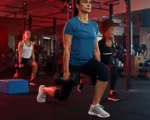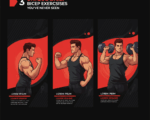Overuse injuries are one of the most common challenges young athletes face. Whether it’s soccer, running, or baseball, repetitive stress on developing bodies can lead to conditions like shin splints, stress fractures, or pitcher’s elbow. The good news? These overuse injuries are largely preventable with the right strategies and precautions. This guide will help youth soccer players, teenage runners, and young baseball pitchers avoid sidelining injuries and stay at the top of their game.
What Are Overuse Injuries?
Overuse injuries occur due to repetitive stress placed on the same muscles, joints, tendons, or ligaments over time. Unlike acute injuries like sprained ankles, these develop gradually as a result of training patterns, poor technique, or inadequate recovery. For young athletes, ongoing development and growth make them especially vulnerable.
Common Overuse Injuries in Youth Sports:
- Shin Splints (Soccer, Running): Pain along the shin bone caused by repetitive running or jumping.
- Stress Fractures (Running, Soccer): Tiny cracks in bones due to repeated impact or force (commonly in the feet or legs).
- Pitcher’s Elbow (Baseball Pitchers): Elbow pain and inflammation caused by repetitive throwing motions.
Top Risk Factors for Overuse Injuries
Dr. George Malik, a sports medicine specialist, emphasizes several risk factors for these injuries in youth athletes, including:
- Specialization in a Single Sport: Playing only one sport year-round increases stress on the same muscles and joints.
- Growth and Development: Young athletes’ bodies are still developing, making them more prone to strain.
- Training Volume: Overtraining without proper rest leads to muscle fatigue and poor biomechanics.
- Nutritional Deficiencies: Lacking essential nutrients like calcium, vitamin D, and iron weakens bones and muscles.
- Poor Support System: Athletes lacking emotional and social support may overexert themselves to seek success or approval.
By addressing these factors proactively, you can significantly reduce your athlete’s risk of injury.
6 Tips to Prevent Overuse Injuries
Preventative measures are essential to maintaining long-term athletic health. These practical tips can help keep young athletes safe, healthy, and performing their best.
1. Focus on Proper Warm-Ups and Cool-Downs
- A proper warm-up, including dynamic stretches and light cardio, prepares muscles and joints.
- After practice or competition, prioritize a cool-down with stretching to reduce muscle tension and improve recovery.
Pro Tip: Incorporate sport-specific stretches, such as calf stretches for runners or forearm stretches for pitchers.
2. Strengthen the Entire Kinetic Chain
Overuse injuries often result from weak or imbalanced muscles. Work on strengthening core, hip, glute, and leg muscles to reduce stress on joints.
- For Soccer Players: Focus on building strong calves, quads, and hamstrings to minimize shin splints.
- For Runners: Incorporate plyometric exercises to improve lower body strength.
- For Pitchers: Strengthen the shoulder, forearm, and core to alleviate elbow strain.
3. Encourage Rest and Recovery
Rest is just as important as practice. Build in time for recovery to allow the body to heal. Dr. Malik recommends the practice of «periodization»:
- Pre-Season: Build strength and explosive movements.
- Season: Focus on maintaining skills.
- Post-Season: Rest for at least 1 month, focusing on low-intensity activities like cross-training or flexibility work.
Pro Tip: Young athletes should avoid consecutive seasons of the same sport to allow their bodies to engage in different movements.
4. Teach Proper Technique
Faulty movements place unnecessary stress on specific body parts, heightening the risk of injury.
- Soccer players can avoid shin splints by learning proper running mechanics.
- Runners should ensure proper foot strike and avoid over-striding.
- Pitchers should work with a coach on proper throwing technique to minimize stress on the elbow.
5. Prioritize Nutrition and Hydration
Nutrition is critical for developing bones and muscles. Ensure your athlete is consuming enough calories and key nutrients, including:
- Calcium & Vitamin D: For strong bones.
- Iron: To support endurance and oxygen transport.
- Protein: To rebuild muscle tissue post-training.
Encourage balanced meals and proper hydration to prevent issues like fatigue or energy imbalances (relative energy deficiency in sport).
6. Don’t Ignore Pain
Pain is often an early warning sign of potential injury. Educate young athletes to speak up if they feel discomfort rather than «playing through the pain.»
- When to Seek Medical Attention: Lingering pain, difficulty bearing weight, or reduced performance are signs that professional evaluation is needed.
Physical therapists and sports medicine specialists can recommend activity modifications or treatments to aid recovery.
Sport-Specific Advice
For Youth Soccer Players
- Monitor training intensity, especially for positions requiring frequent sprints.
- Alternate between games on turf and grass to reduce repetitive impact on the shins.
For Teenage Runners
- Gradually increase mileage (no more than 10% per week) to avoid stressing bones and ligaments.
- Rotate running shoes regularly to maintain proper cushioning.
For Young Baseball Pitchers
- Follow pitch count guidelines appropriate for age to prevent overuse of the elbow.
- Warm up thoroughly before pitching and avoid playing catcher simultaneously.
Creating a Safe and Balanced Athletic Journey
Preventing overuse injuries requires a thoughtful and balanced approach to training. By prioritizing proper warm-ups, building strength, scheduling recovery periods, and monitoring nutrition, you can help youth athletes stay healthy and reduce their risk of long-term damage.
For parents and coaches, fostering open communication about pain or discomfort is critical in supporting your athlete’s health and wellbeing.
Together, by focusing on the big picture, we can ensure young athletes enjoy the long-term benefits of sports without being sidelined by preventable injuries.
If you’re ready to support the health of your young athlete with professional guidance, consult a sports medicine specialist or physical therapist to design an injury prevention plan tailored to their needs.








